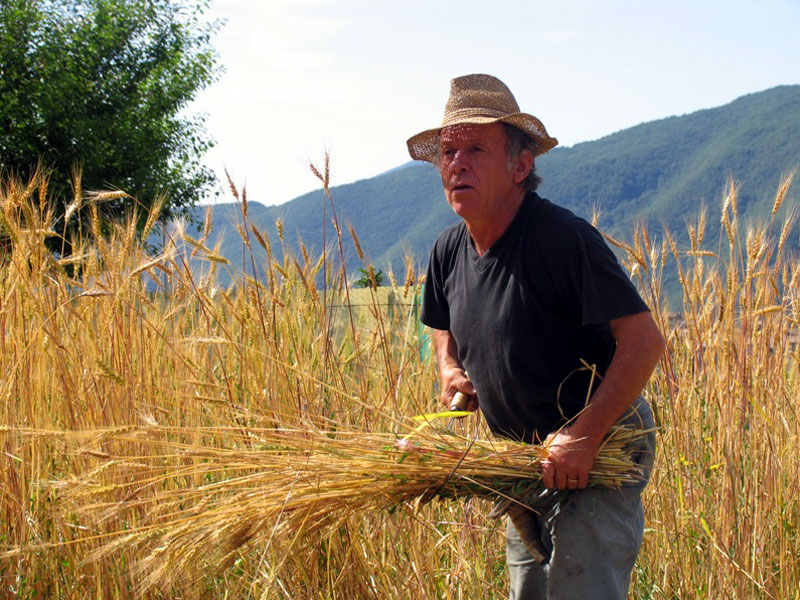Products
The Territory and the Products
In Monti Simbruini Regional Park, the agricultural and breeding activities involve a surface area of about 8,000 ha, approximately equal to the 28% of the whole Park area. Although the statistic data reveal a negative trend in the dynamics of the local people, with a still ongoing exodus towards the nearby town of Rome, the potentialities linked to traditional activities, including agricultural activities, are considerable. Among the most promising "entrepreneurship nests" there are breeding (of cattle, sheep, and horses), cheese making, and the cultivation of characteristic vegetable species like the legumes of the middle valley of Aniene ("fagiolina", "cioncone", Vallepietra bean, and "pallino") and the truffle.
Breeding goes together with a practice that is no longer used: the so-called "pascolatico". In some state-owned grassy areas, the local people can still leave their animals grazing without limits of time, number, and species. The local woodlands are rich in mushrooms and game, while the watercourses house a considerable fish population. Famous are the trout and lampreys fished in the river Aniene in Filettino, Trevi, Jenne, Subiaco, and in river Simbrivio in Vallepietra. All this contributes to characterize the gastronomy tradition of Simbruini Mountains, a fine combination between knowledge and tradition, the everyday efforts and the ability to transform into a tasty dish also the less noble local products.
Water, flour, and passion are the ingredients of the 'ndremmappi di Jenne, a sort of fresh pasta based on wheat flour mixed with bran. The pastry, obtained by mixing the dough with mild water, is rolled out and cut into rather large strips. The latter are put one onto the other and cut until you obtain small strips of 4-5 mm of length. Afterwards, a sauce made with oil, garlic, parsley, chili pepper, tomato sauce, and anchovies is added.






